How to Run the World's Most Complicated Le Mans Car
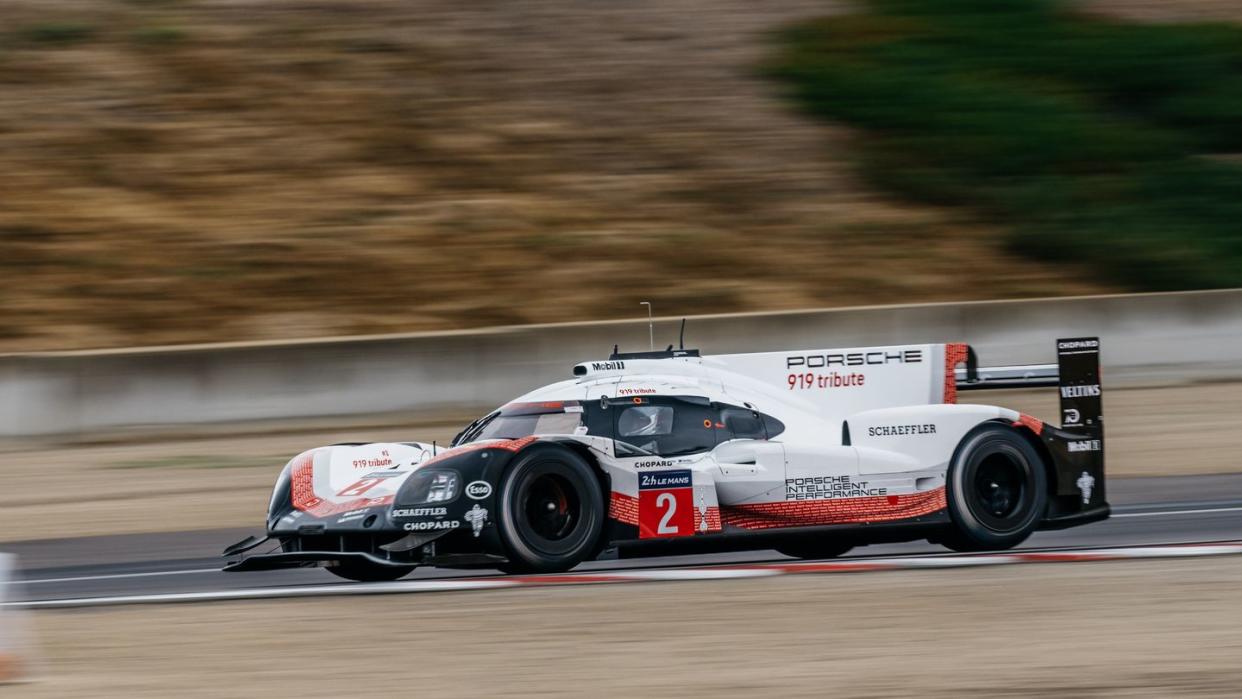
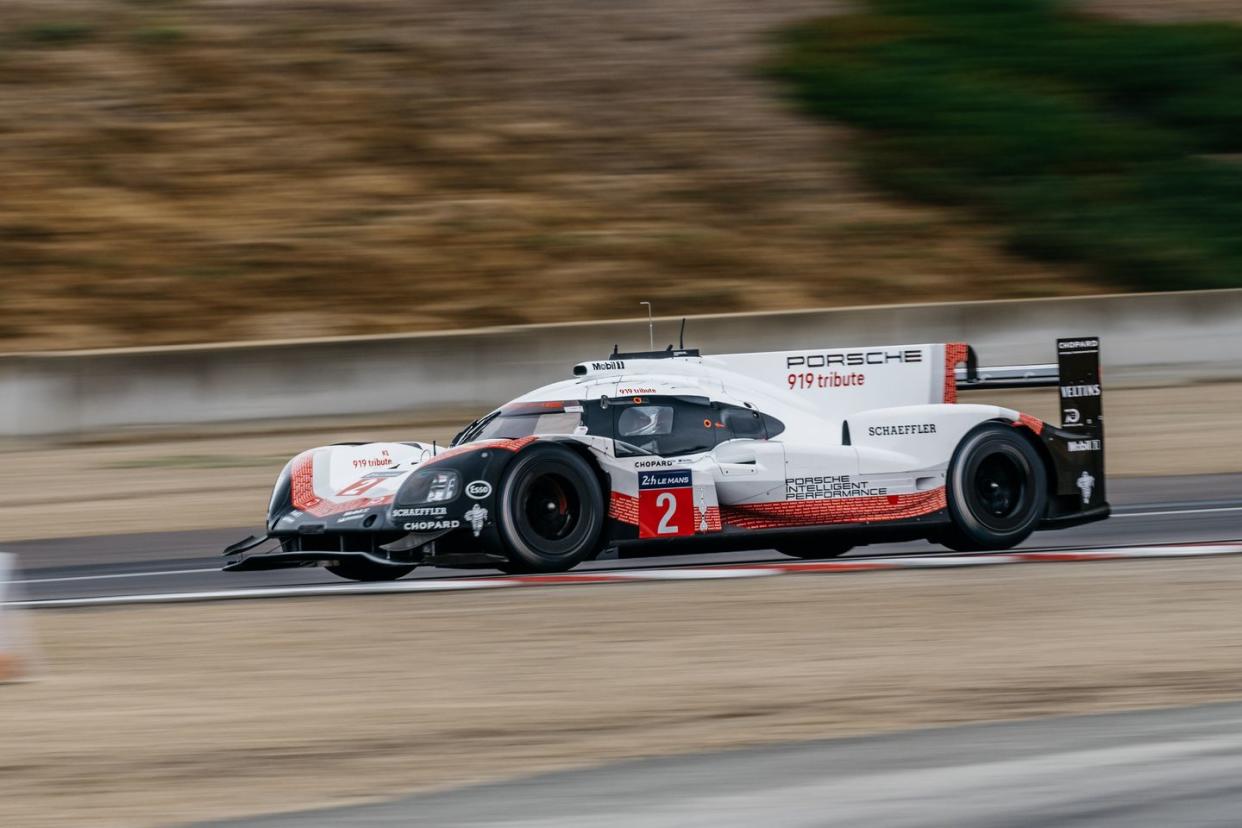
The Porsche 919 is one of the most complicated race cars ever made. During its racing life, a team of 25 mechanics was on hand to operate each example. Armin Burger, motorsports coordinator at the Porsche Museum, has just a team of four, including himself, to run the LMP1 machine. It seems like an impossible task, yet, the 919 is running laps around Laguna Seca at Porsche's Rennsport Reunion event five years after its official retirement.
Burger explains to Road & Track that his team was involved with the 919 from very early on, so it wasn't a case of the car retiring in 2017, then getting sent off to the Museum with nary an instruction manual. The mechanics had an idea of what to do. One was a longtime motorsport mechanic at Porsche and worked on the 919 project when it was in competition. He, Burger, and other mechanics who know the 919 have also trained some of the younger Museum staff on how to run the car.
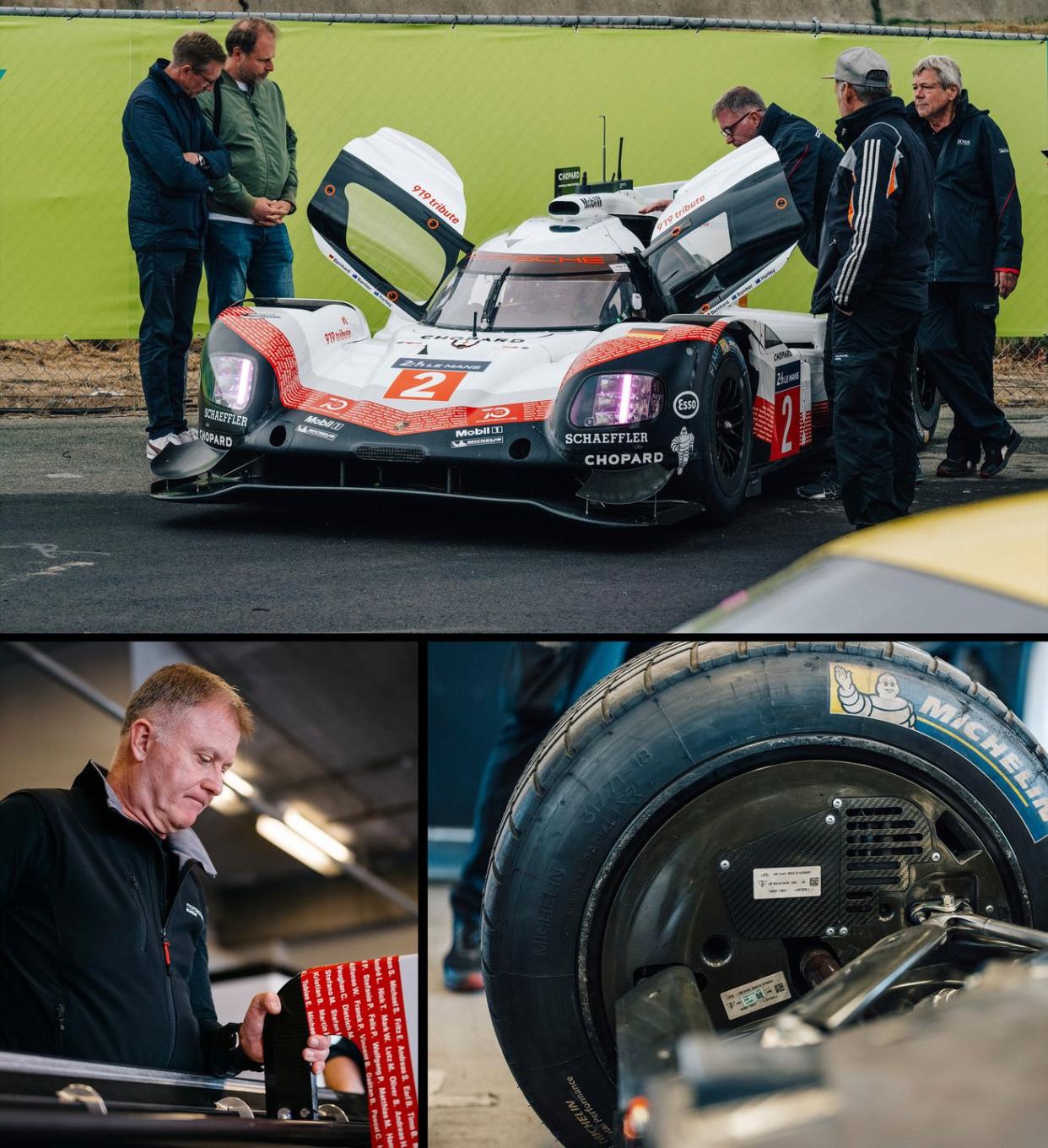
But even then, Burger and his team had to make a thematic compromise in the name of practicality: They deleted the car's front-axle hybrid system entirely. Free from competition duty, there's no need to run the car as a hybrid. When you're not fighting Toyota prototypes at La Sarthe, the 500-hp V-4 driving the rear wheels is more than enough. Replacing the 800-volt electrical system are two 12-volt batteries from a Panamera.
By getting rid of the hybrid system, the headcount required to operate a 919 decreases dramatically. That still doesn't make it easy. The 919 is like a spaceship compared with pretty much every other Porsche prototype to ever race. "A 908 or a 917 is a very simple car," Burger says. "You need petrol, and a good battery. That's all." You need to let the engine run for 10 to 20 minutes to build up some temperature, but that's really all. In a 919, it's a half-hour long process just to get the car to run.
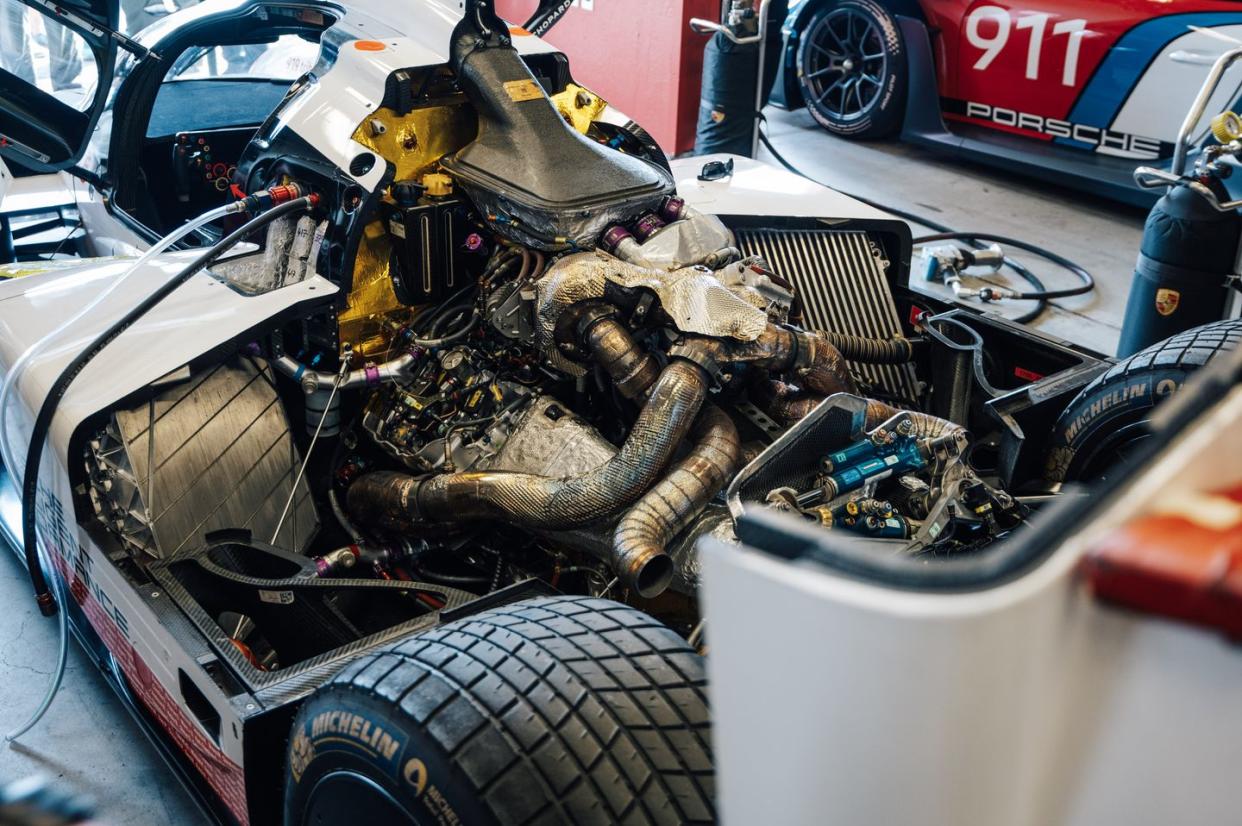
Before firing the engine, Burger and crew have to preheat both coolant and oil for around a half hour. Like many top-tier modern racing engines, the 919's V-4 is built to such tight tolerances that if you start the engine cold, all the metals inside would expand too quickly and the whole thing would blow up in spectacular fashion. Once warm, an engineer hops in the car, cranks the engine and lets it run for about 30 seconds. They then turn it off, and the team checks the coolant, the hydraulic power steering system, and runs through the transmission's seven gears. After all that, the engineer turns the engine on for around a minute.
The gearbox needs engine temperature to warm up, too. Though not too much. It's not an issue here at Laguna Seca, but on a hot summer's day, the engineers might need to use blowers to cool the engine down slightly after going through the whole procedure of warming it up.
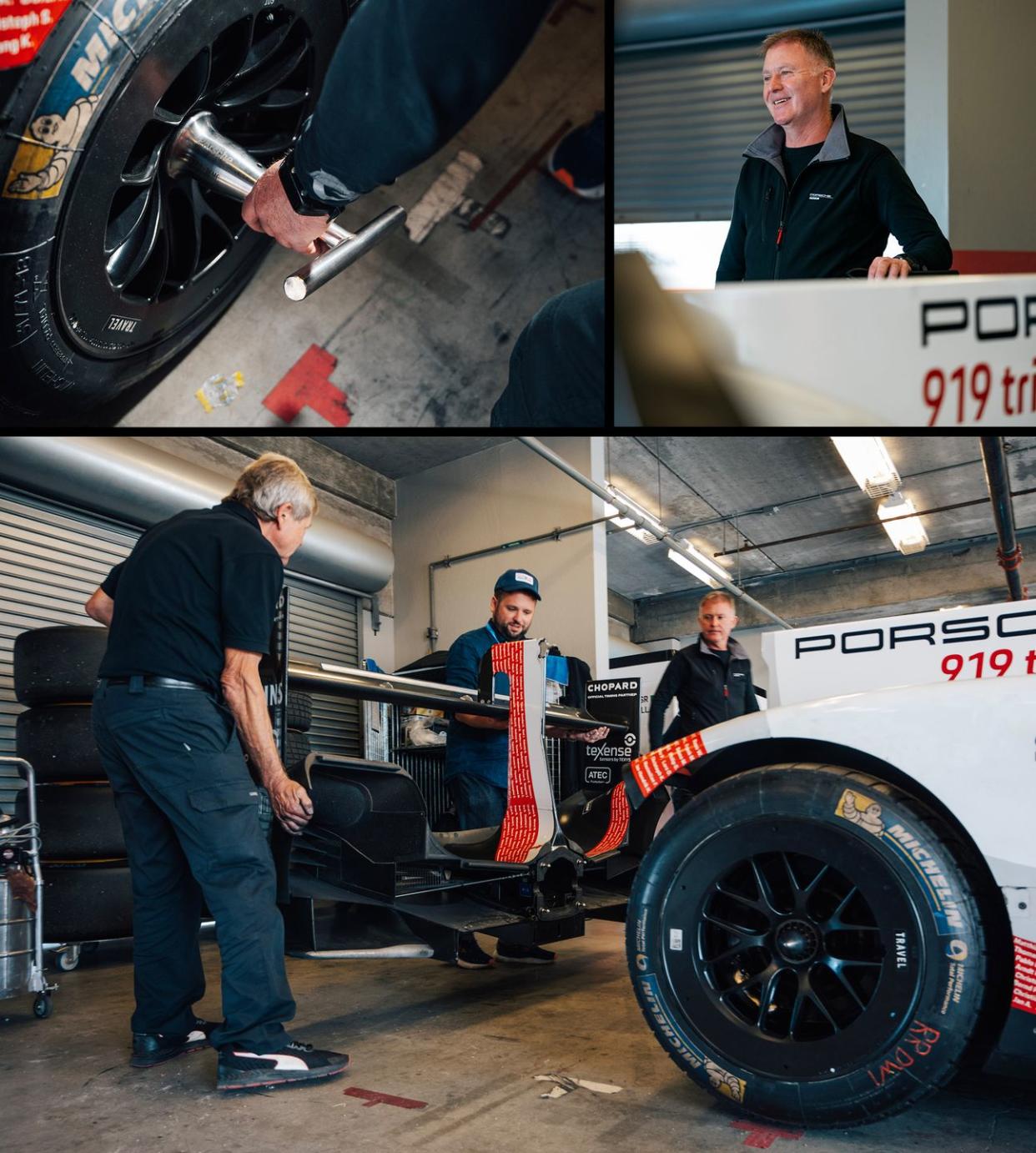
In its racing life, the 919 leaned on its electric system to help get the car moving, which allowed the car's designers to use a much smaller clutch. Without that, drivers have to get the car moving in the traditional manner, albeit with a hand-operated clutch, and it's very hard to feel out the exact bite point. It's for this reason, among others, that only drivers with LMP1 racing experience are allowed to drive the 919 even now.
After demo laps are completed, the engineers have to immediately pump the engine oil out to an external tank. Burger explains that the pan is so small, there's just nowhere for the oil to go on its own when the engine is shut off, and thus, you run the risk of damaging the V-4. Remarkably, the 919 runs on off-the-shelf Mobil 1 0W40—the same oil specified for so many Porsche road cars—and it takes just 3.17 quarts. A 917, by contrast, requires a little over 26 quarts.
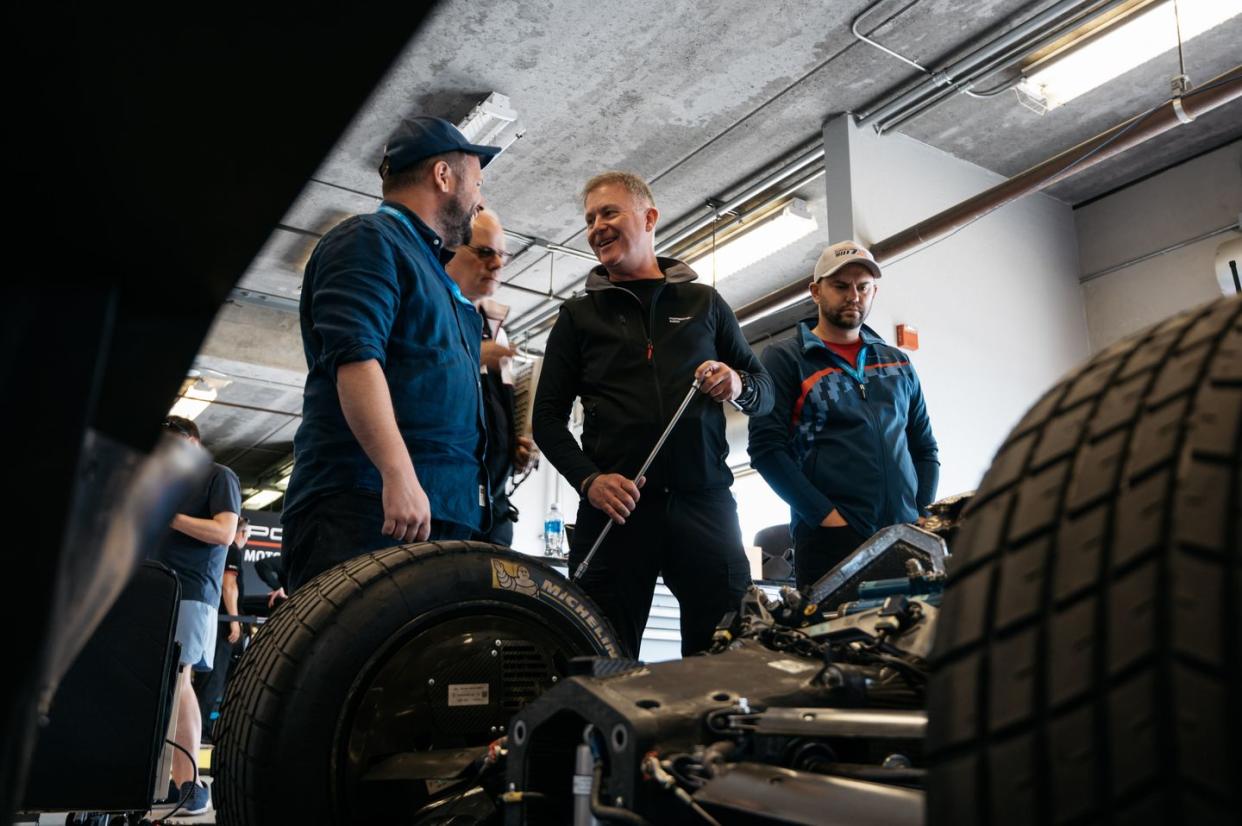
Burger shows us around the garage, letting us root through all the tools and spare parts that came directly from the race team. It's not exactly packing light. The torque wrench for the single-bolt wheels is, of course, massive and the socket has the words "Porsche Museum LMP1 Demo" etched onto the surface. There's a familial feel with the team. Burger and two of his other technicians all worked on the 911 GT1-98 program 25 years ago. For one, their last job would be this Rennsport Reunion. "It's amazing for us," Burger says, "and there's a lot of emotions now because he leaves the factory and he's more than a colleague, he's a friend."
The 919 is nearly 10 years old, yet just five minutes poring over it shows how advanced it is even by modern standards. Everything is small and delicately packaged, especially the engine. Even next to the new 963 LMDh car, the 919 appears alien. Of course, looking at the 919 is a good reminder of why LMP1 hybrid racing was totally unsustainable. The cost to make this thing a reality, and to run it for four years was astronomical, so the relative simplicity of the 963 is a good thing. But as far as sports prototypes go, the 919 is arguably the peak.
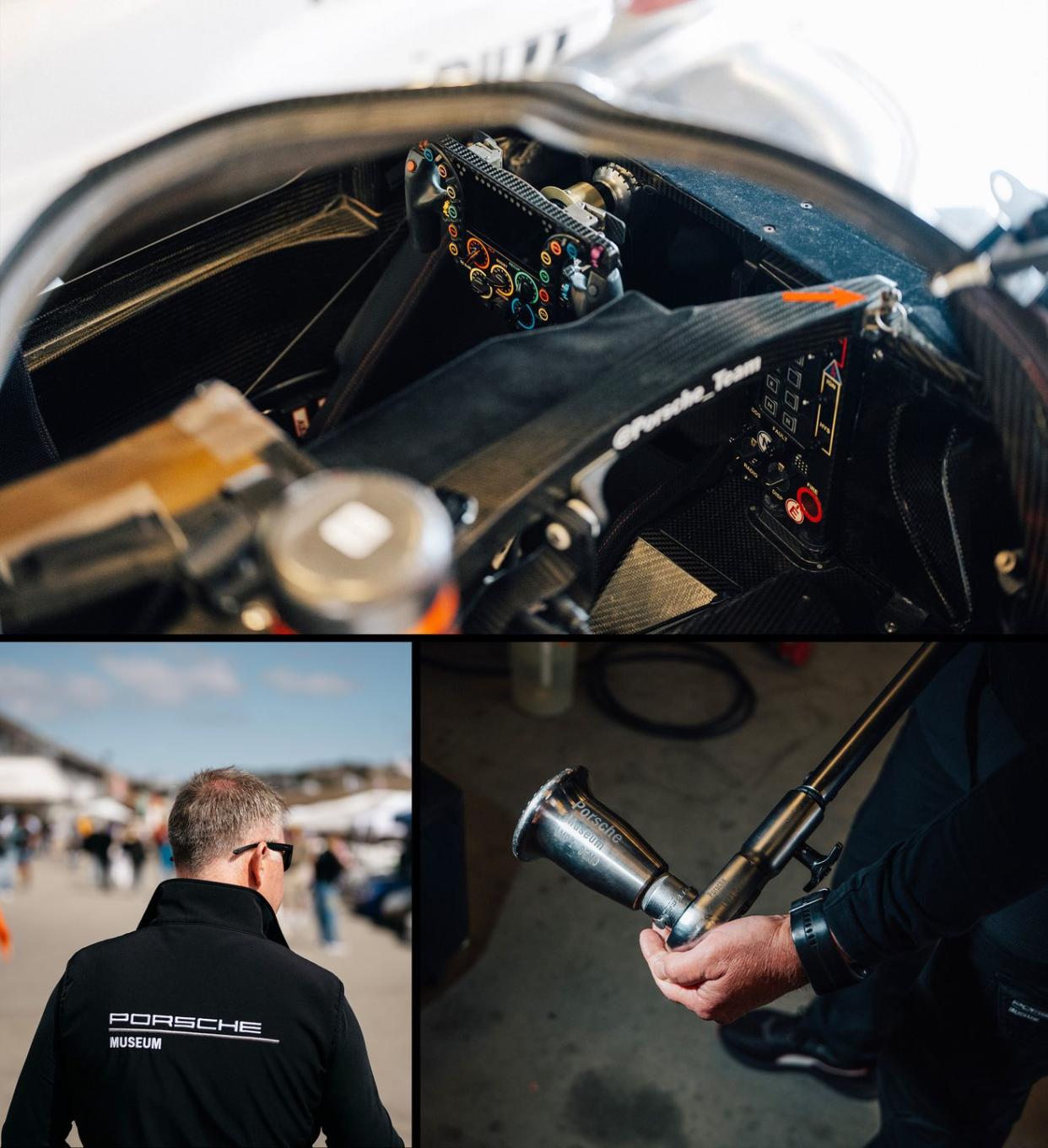
Burger wants the 919 to better represent this peak. It's his goal to develop some sort of simple high-voltage hybrid system to give people a taste of what it was like during its racing career. Even just pulling out of the pits on electricity, and firing the engine as it makes its way on the track makes the history so much more vivid.
He's worried, though. As we move towards our electrified future, and environmental concerns are paramount, is there going to be a need, a desire to employ a team of people to run everything from a 917 to a 919?
The Rennsport Reunion may have posited an answer. Ninety-one thousand Porsche fans attended the four-day event, many of them stopping at the 919's open garage and taking photos of this epochal car. The Porsche thing shows no sign of slowing down, and at least some credit to that has to go to the Museum and to the brand's approach to its history. Put value behind these things and there will always be a place for a 919 to run.
No matter how difficult.

A car-lover’s community for ultimate access & unrivaled experiences.JOIN NOW Hearst Owned
You Might Also Like
